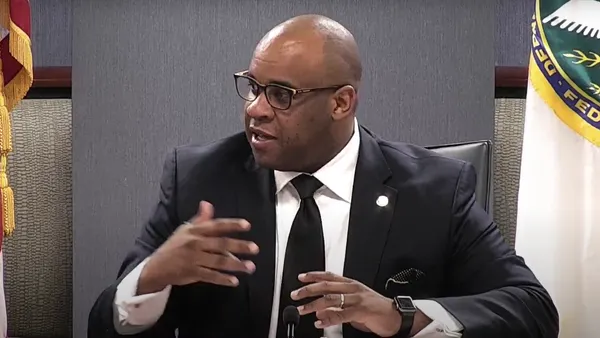Dive Brief:
-
Environmental groups are challenging the California Public Utilities Commission's (CPUC) decision to authorize emergency capacity procurements for the summer months, saying that it essentially creates a loophole for new investments in fossil fuel resources despite the state's long-term climate goals.
-
Sierra Club, the Union of Concerned Scientists and the California Environmental Justice Alliance (CEJA) last week filed an application asking the commission to reconsider the decision, after the state's utilities outlined plans to contract additional capacity from existing fossil fuel plants.
-
"The commission is digging us deeper into a hole by making us more dependent on fossil fuels … and it's doing so on the backs of communities that have been bearing the brunt of the pollution for far too long already," said Nina Robertson, staff attorney with Earthjustice.
Dive Insight:
The CPUC's February decision directing utilities to contract additional capacity for the summer months is one in a series of strategies to support the grid during possible extreme weather conditions. Last year, a combination of factors, including a record-breaking heatwave, pushed the California Independent System Operator to initiate rolling blackouts for the first time in two decades, affecting hundreds of thousands of customers and prompting an inter-agency analysis into what went wrong.
Looking to prevent a repeat of that situation, the CPUC allowed utilities to draw additional capacity for the summer from four sources: energy storage, firm forward imported energy, generation that is at risk of retirement, and from power plants via efficiency upgrades or reworked contracts.
The decision was met with widespread criticism from the environmental community, who feared it would lead to additional natural gas generation. In approving the proposal, regulators said they did not anticipate it resulting in long-term gas contracts — but in their filing last week, the groups pointed out that utilities have proposed procuring some additional capacity from existing gas-fired facilities. In addition, utilities are also looking to biomass and cogeneration plants.
At the same time, the CPUC is in a difficult position given the timelines it's working with — even this decision was issued pretty late in the game, which is one of the key reasons utility procurements were pretty much entirely from existing resources, Seth Hilton, partner at Stoel Rives, said.
"It would be near impossible for the CPUC to go back and change the framework of how it's procuring resources at this point and have them ready for 2021," he said.
The environmental groups identified three errors with the commission's decision in their application: authorizing additional procurement without a need determination; contradicting California's climate goals by allowing contracts for fossil fuels; and allowing utilities to procure those resources using a Tier 1 advice letter process, rather than a formal application.
On the question of need, the groups pointed out that the commission in 2019 already directed load-serving entities to procure 3.3 GW of resources, as well as extending the lifespans of several gas-fired plants. Moreover, they argued that the August blackouts were caused not by inadequate capacity but because of operational failures, which resulted in almost 3 GW of exports being unavailable to the state.
And unlike applications, Tier 1 advice letter processes don't involve testimony or evidentiary hearings, where parties can cross-examine witnesses to get a better understanding of the need for these resources, Robertson said.
"Tier 1 advice letters are usually used for rubber-stamping things," where there's no question that the issues raised comply with the law, she added.
There could be challenges around the speed at which the commission moved to procure these resources and the choice to use the Tier 1 advice letter process as the approval mechanism, Hilton acknowledged.
"But on the other side, it's a bit of an emergency and they need to get these resources contracted, approved and online within a few months," he said.
And while the procurement process the commission traditionally used is much longer, involving evidentiary hearings and a formal application, "part of the reason why we're in a challenging situation now is that type of procurement takes a very long time, and if you don't correctly anticipate what the future holds in terms of load, you can get cut short," Hilton added.
But the environmental groups say that regulators have other options open to them. Last week, for instance, the CPUC issued a second reliability-related proposal, this one more focused on demand-side strategies. The proposed decision, which is scheduled for a vote on March 25, would roll out a new emergency load reduction program and increase incentives to participate in demand response programs. To the extent that there is a need for resources this summer, these are the kinds of resources that could be put in place in time, said Shana Lazerow, legal director of Communities for a Better Environment. Lazerow is representing CEJA in the proceeding.
"[E]nabling things that are already on the system, looking at different ways of managing load — those kinds of things can happen very quickly," she added.














